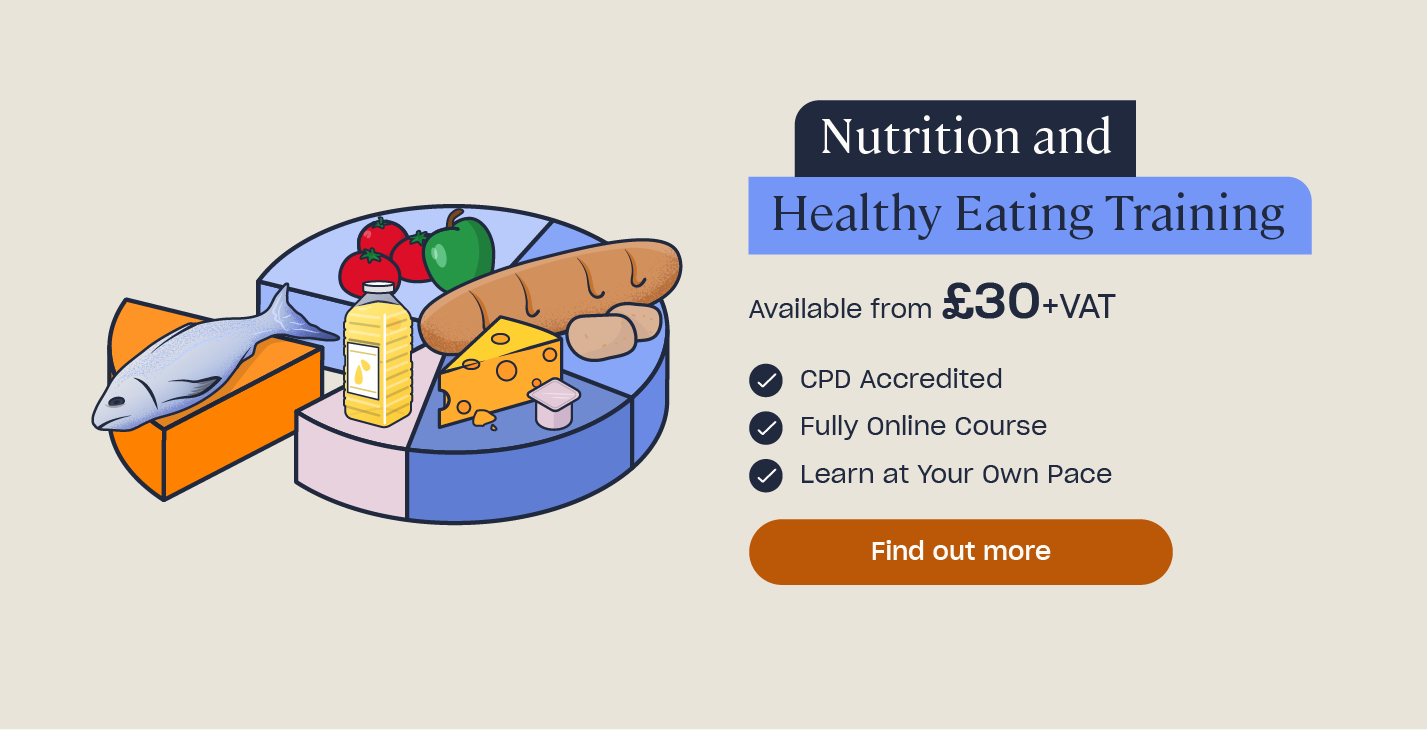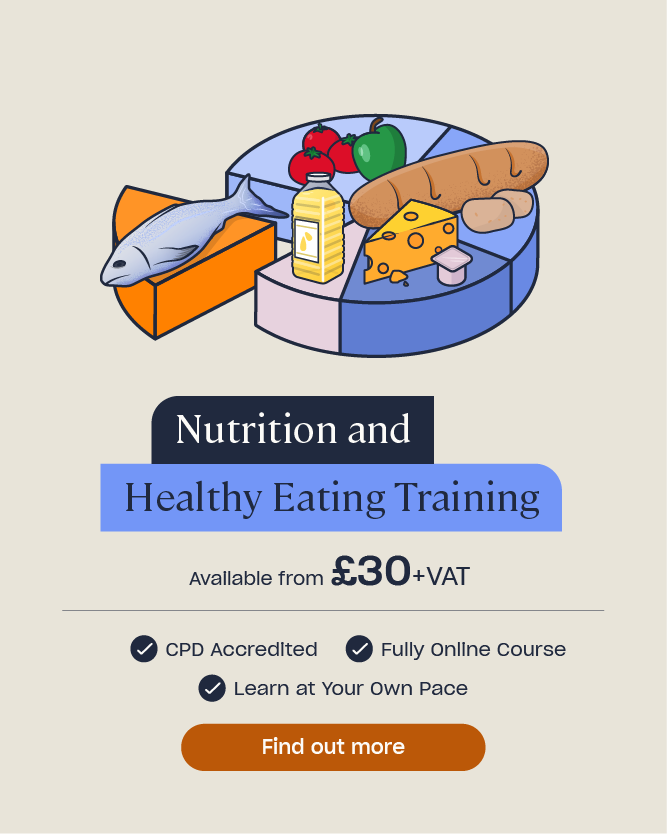A Vegan Diet: Benefits & Meal Ideas
People who follow a vegan diet do not eat any food that comes from animals or from the exploitation of animals. An increasing number of people are seeing the benefits of veganism and are looking to reduce the amount of animal-derived foods they buy and eat. In fact, according to The Vegan Society, as many as 46% of people in Britain aged between 16-75 are considering reducing their intake of animal products in the future.
This means that, even if you are not vegan yourself or even considering becoming one, it’s likely that someone you know or meet in the future will be and it’s important to be knowledgeable and accommodating of their diet. In this article, we will explain what you can eat in a vegan diet and provide an ingredient list and example recipes for vegan cooking. We will also explain the benefits of becoming vegan and how to safely balance a vegan diet.
What Can Vegans Eat?
Like vegetarians, vegans do not eat any meat or fish, however, unlike vegetarians they also don’t eat any products that are made by animals. This includes dairy, eggs and anything else that is made through what they consider to be the exploitation of animals. This also includes insects, like bees, meaning most vegans do not eat honey.
Veganism is more than just a diet, it’s a lifestyle, and vegans try not to buy any products that come from the exploitation of animals. Examples include clothing made from leather, suede and in some cases wool, as well as cosmetics that were tested on animals.
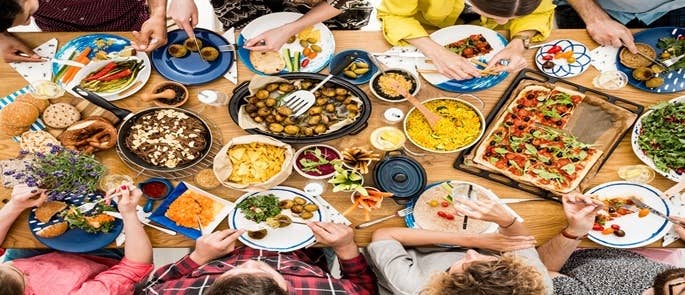
A vegan diet consists primarily of plant-based foods in either their natural, unprocessed form, or processed into other forms, such as meat substitutes. Like any diet, a vegan diet can vary, often based on the health outcome that the individual wants to achieve. Some of the different types of diet that a vegan may follow include:
Raw vegan diet. People on this diet only eat raw plant foods, such as raw nuts and seeds, uncooked fruit and vegetables and soaked grains. This is because they believe that the process of cooking food breaks down the nutrients in the food, meaning it has fewer health benefits. While this is true to an extent, cooking plant-based foods can also increase the amounts of healthy nutrients in some foods, such as tomatoes.
Vegan keto diet. This is a low-carb, high-fat diet primarily followed for weight loss. A regular keto diet usually involves high quantities of animal-derived foods as they are high in fat, while a vegan keto diet features high-fat plant foods like avocados, nuts and seeds and oils. High-carb foods like bread, rice and pasta, as well as high-sugar fruit and vegetables are excluded from this diet.
Vegan diabetic diet. This diet aims to reduce carbs, particularly refined carbs and is primarily undertaken by diabetics who need to control their blood sugar levels. Refined carbs cause blood sugar to spike, so this diet focuses on foods that stabilise blood sugar. This includes high-fibre foods like beans and legumes, high protein foods like tofu and healthy fats like avocado, nuts and seeds and oil.
High protein vegan diet. This diet may be followed by people who are very active, such as athletes, as it is high in protein. Protein helps to build and repair the muscles and is a good source of energy. One concern people may have when going vegan is the loss of protein from animal-derived foods. However, there are lots of high-protein vegan foods such as beans, tofu, seitan, oats, nuts and seeds. Vegans can also use vegan protein supplements like protein powder made from plant sources.
There are other types of specialised vegan diets to suit different health needs, such as the vegan anti-inflammatory diet, the alkaline vegan diet, the mediterranean vegan diet and the low-carb vegan diet.
However, it’s important to note that not all vegan diets are created equal in terms of their health benefits. If a vegan diet is too restrictive in the types of food you can eat, this can cause you to miss out on vital nutrients your body needs to function properly. You need to eat a wide range of plant-based foods to ensure that you’re gaining enough nutrients as different nutrients come from different types of food.
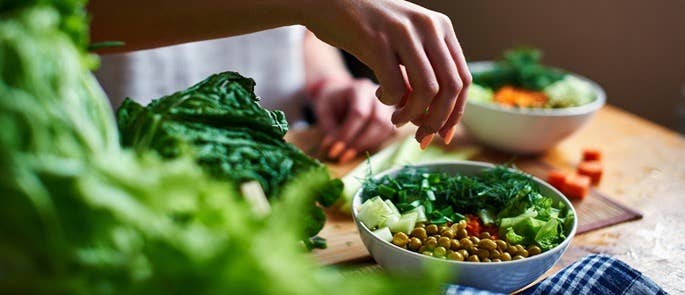
If you become deficient in a certain nutrient this can have a harmful impact on your body. However, it is completely achievable to get all of the nutrients your body needs within a vegan diet. The Vegan Society provides a Vegan Eatwell Guide that outlines exactly how much of each food group you should be eating to gain the nutrients you need.
If you do decide to follow a restrictive vegan diet, such as the vegan keto diet or the raw vegan diet, you should consult with your doctor before doing so. Your doctor can also test to determine if you have a deficiency and, if you do, they may suggest changes to your diet or provide you with a nutrient supplement.
Benefits of a Vegan Diet
Research from the University of Oxford shows that if everyone in the world was vegan, over eight million human lives could be saved each year by 2050, due to reduced consumption of red meat, alongside increased fruit and vegetable intake and reduced calories. This would result in fewer people being overweight or obese and the health problems that stem from this.
The research also showed that greenhouse gas emissions from agriculture would be reduced by two-thirds if everyone adopted a vegan diet. So, while the mistreatment of animals through farming is a primary reason that many people become vegan, there are also clear health and environmental benefits to a vegan diet.
Cutting meat and dairy out of your diet is proven to be the best single way to reduce your environmental impact, due to the damage that animal farming does to the earth. Additionally, the loss of wildlife for agriculture is the leading cause of species extinction.
Research shows that even the meat and dairy products with the lowest environmental impact still have a significantly more damaging effect than the least sustainably grown fruit, vegetables and cereals.
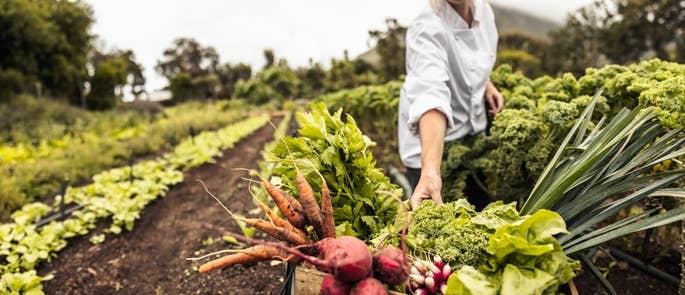
A vegan diet can also have significant health benefits, such as promoting weight maintenance, when followed appropriately. Plant-based foods are higher in fibre than animal-derived foods and fibre can help to make you feel fuller for longer, reducing snacking and supporting weight loss or maintenance. Additionally, animal-derived foods are higher in fat than natural plant-based foods, so switching them out can also be beneficial for weight loss.
However, some vegan foods are healthier than others and if you eat a lot of ultra-processed vegan foods that contain unhealthy additives, then you may not see the weight loss benefits mentioned above. It’s important that your vegan diet has balance and that you mostly eat natural, nutritious plant-based ingredients.
A vegan diet may also reduce your risk of developing certain diseases. Research shows that meat and fish contain certain toxins linked to diseases including cancer. In fact, processed meat is called as a group 1 carcinogenic by the World Health Organisation, the same classification as cigarettes, alcohol and asbestos. Certain fish also contain toxic mercury.
A plant-based diet has been proven to help control blood sugar levels, reducing your risk of Type-2 diabetes. It can also help to manage blood pressure and cholesterol, lowering your likelihood of developing cardiovascular diseases, as plant foods are far lower in salt and saturated fats than animal-derived food.
Other health benefits associated with a vegan diet include healthier skin due to the quantity of vitamin C and E in plant-based foods, as well as anti-inflammatory qualities as plant foods are rich in antioxidants. This reduces your risk of developing conditions like arthritis.
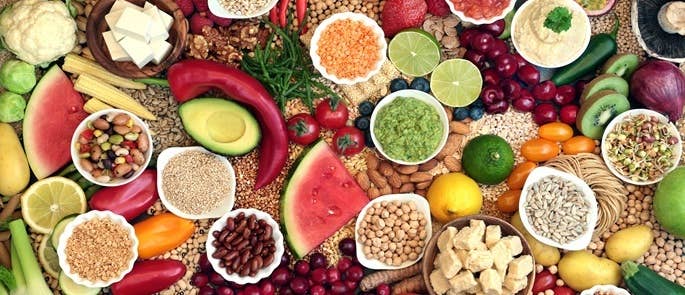
A vegan diet can also improve your gut health. Research is really just getting started into gut health but there is evidence to show that the state of your gut can affect both your physical and mental wellbeing. The food we eat changes our gut biome and a vegan diet has been shown to increase the variety of microbes living there. The more diverse your microbiome, the better equipped it is to fight different diseases.
Finally, there are the benefits to animal wellbeing that come from adopting a vegan diet. While you may think going vegetarian would be enough to counteract the animal maltreatment involved in animal farming, in actual fact, mass dairy and egg farming can be just as harmful. In the UK, more than two million land animals are killed every day for farming.
In the egg industry, male chicks, which do not lay eggs, are often killed as soon as they hatch, either by being thrown into a grinder or being gassed to death. The hens who lay the eggs are forced to live in ‘enriched’ cages, thought to be more ethical than battery cages, but that in fact allow the hens less than an A4 paper sized space to roam. These hens are usually then killed within a year, despite their natural lifespan being seven years.
This is just scratching the surface of the mistreatment of animals that results from animal farming and similar practices are reflected in the dairy industry. Adopting a vegan diet reduces demand for animal-derived products, meaning less animals are bred for farming and slaughter. It can also reduce commercial fishing practices, reducing the likelihood that certain fish and seafood species will become extinct in the future.
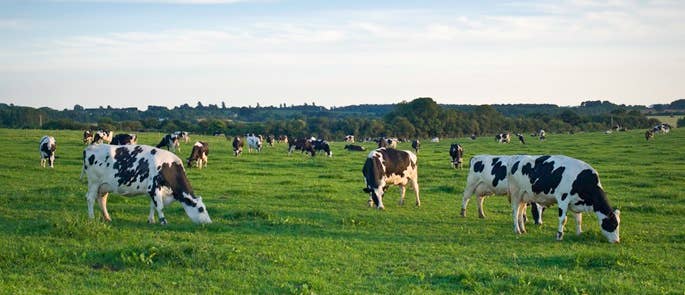
Research from the Humane League UK suggests that going vegan could save one animal per person, per day. While this number may seem small, the more people who switch to a vegan diet, or even just buy fewer animal-derived products, the more animals will be saved as demand shrinks.
Whatever your reason for considering veganism, there are a number of tangible benefits that would make your effort worthwhile.
Vegan Food List
As a vegan, you need not miss out on any of the foods that you know and love and your new diet may open your eyes to ingredients you’ve never tried before. You also shouldn’t be missing out on any of the nutrients that your body needs.
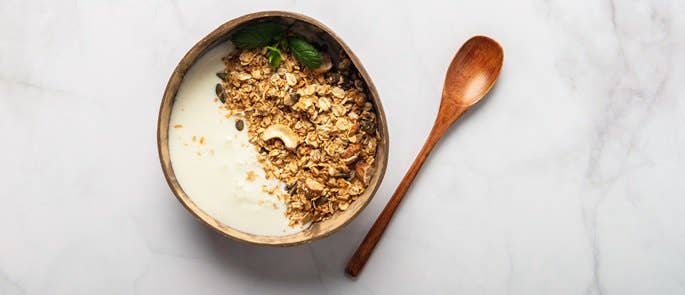
We have provided a list below of some of the most essential nutrients that your body needs to function properly and the vegan foods that they can be found in. You should try to include as many of these food groups as possible in your regular diet:
Calcium: Soy foods, including tofu and soy milk, legumes, almonds and brazil nuts, seeds, including tahini, a sesame seed paste, chia and flax seeds, dark leafy greens, raw figs, oranges and berries.
Vitamin D: Mushrooms, fortified tofu, plant milks including soy, almond and rice milk, fortified breakfast cereal, fortified orange juice.
Vitamin B12: This does not come from fruit or vegetables, so in a vegan diet it must be eaten primarily in foods fortified with B12. This includes some plant milks, soy products and breakfast cereals, as well as nutritional yeast fortified with B12.
Iron: beans and lentils, nuts, dried fruit, leafy greens including spinach and chard, tofu or tempeh, blackstrap molasses (a type of syrup).
Omega-3 fatty acid: Nuts and seeds, plant oils, leafy greens, beans, algaes including seaweed, spirulina, nori and chlorella.
In addition to these foods, a vegan diet should also include a large quantity of fruit and vegetables, legumes and pulses and vegan carbohydrates like bread, rice and pasta. These will provide a good range of nutrients and provide long-lasting energy.
You can find a more detailed vegan grocery list to use when you next go shopping in our article ‘A Vegan Grocery List – 50 Ideas for a Healthy Vegan Kitchen’. You can also learn more about how to achieve a nutritionally balanced diet in our article, here.
Some people may be reluctant to adopt a vegan diet as they worry that it’s too restrictive and that they will no longer be able to eat their favourite foods or meals. However, there are now vegan alternatives to most animal-derived foods, with this number increasing as more people switch to a vegan diet and the demand for vegan products increases.
Some examples of vegan alternatives to animal-derived foods include:
- Milk: there are a variety of vegan milks to choose from made from different plant-based ingredients, such as oats, soya or almonds. They will taste slightly different depending on what they are made from but most can be used in the same way that dairy milk is. These milks do not contain lactose which can be beneficial for people suffering from lactose intolerance.
- Cheese: vegan cheese is usually made from nuts like cashews and vegetable oil, with flavourings added to make it ‘cheesy’. There are vegan alternatives to many non-vegan cheeses, including cheddar, mozzarella, blue cheeses and more.
- Meat: you can now find plant-based versions of most meats. Just a few examples include bacon made from pea protein, jackfruit pulled pork and chicken nuggets made using soya. You can also get vegan fish alternatives, such as salmon made from wheat protein and vegan sushi.
- Mayonnaise: vegan mayonnaise is usually made from vegan milk such as soy milk, rather than eggs, mixed with vegetable oil.
- Eggs: vegan egg alternatives can be made from different ingredients, depending on the kind of eggs you want. You can buy vegan ‘scrambled eggs’ made from aquafaba (chickpea water) or use flavoured tofu as a scrambled egg substitute. In baking, eggs can be substituted for cornstarch and water or mashed banana. Thanks to much experimenting in the kitchen, there are now even vegan recipes for making fried and boiled eggs.
- Honey: there are lots of plant-based alternatives to honey, including syrups made from fruits like dates or plants like agave. Maple syrup is also naturally vegan.
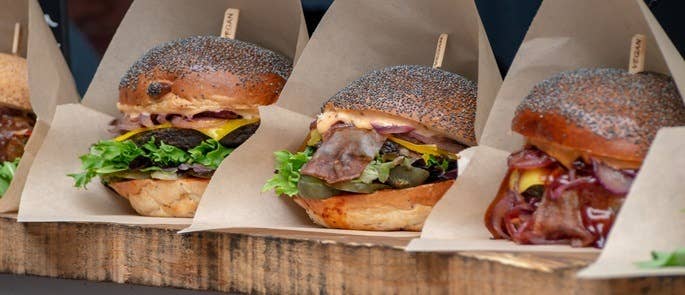
This is just a small selection of the vegan alternatives to non-vegan foods on offer today and the selection continues to grow as more people buy vegan products. At the same time, the number and variety of vegan offerings in restaurants and fast food chains is also increasing, with most fast food restaurants beginning to offer vegan versions of their bestsellers.
While the range of vegan alternatives is exciting and may encourage you to switch up your diet, it’s important to make sure that if you do adopt a vegan diet, you do not rely too heavily on ‘vegan junk foods’. These are highly processed foods that contain a lot of salt, sugar and fat and can include some of the foods mentioned above, such as the meat substitutes.
You should try to focus on cooking your own meals with natural ingredients, rather than reaching for processed ready meals or too many meat substitutes. Below, we have provided some suggestions for simple vegan recipes that you can try incorporating into your weekly meal plan.
- Vegan chilli. There are lots of vegan alternatives to mince meat that you could use in a vegan chilli or bolognese, including crumbled tofu, lentils or one of the many vegan mince substitutes on offer in supermarkets today. You can add lots of vegetables to a chilli to bulk it out and make it as nutritious as possible and even add vegan cheese, nutritional yeast and vegan sour cream on top for added flavour.
- Butternut squash risotto. Risotto is an excellent versatile vegan meal as it provides energy and you can essentially add whatever you like to it. Nutritional yeast can be used to thicken up the risotto and make it more saucy and you can use vegan milk and butter in place of dairy products. If you make a butternut risotto, you can roast the butternut seeds to use as a crunchy, protein packed topping.
- Creamy mushroom pasta. Seeing a vegan recipe described as ‘creamy’ may be surprising, but you can make a fairly simple creamy vegan sauce using raw cashews, nutritional yeast and plant-based milk. You can then add whatever vegan seasonings you like to the sauce, including vegan parmesan, as well as vegetables or proteins like tofu. In this case, we suggest adding mushrooms for a source of vitamin D.
- Aubergine and udon stir fry. Stir fry is one of the quickest and easiest meals to create and uses basic ingredients you probably already have in your kitchen and can be packed full of whatever vegetables you have lying around. You can also add extra protein by adding marinated tofu to the mix. Why not try out our recipe for aubergine and udon stir fry, here.
- Vegan brownies. While milk chocolate and white chocolate aren’t vegan, as they contain dairy milk, dark chocolate usually is, so you can use it to make vegan brownies. However, be sure to check the label just in case it includes any non-vegan ingredients. You can replace the eggs in brownies with flax seeds and water and use vegan butter and cocoa powder, which is vegan.
You can find more vegan recipe inspiration on the BBC Good Food Website, here.

Looking to Learn More?
Our Nutrition and Healthy Eating course teaches you about the importance of a healthy and nutritious diet for your overall wellbeing. It gives you the knowledge you need to establish and maintain a nutritious diet, whether you’re vegan, vegetarian or a meat eater.
Tips For Vegans
Switching to a vegan diet, particularly if you are going from eating meat and animal products, can be daunting. However, there are some simple tips to make the transition easier and to ensure that you maintain a healthy and nutritious vegan diet.
- Fill your plate with natural ingredients.
As mentioned previously, while it may feel easier to opt for the vegan alternative to your favourite snack, these processed treats can have a negative impact on your health.
Make sure to eat these foods in moderation and focus on including whole, unprocessed plant-based foods in your diet as these are the most nutrient dense and will make you feel the best long term. Whole plant-based foods are often much cheaper than processed vegan alternatives, too, meaning you’ll save money by eating this way.
- Plan before you shop.
If you’re new to a vegan diet and aren’t familiar with many vegan recipes yet, deciding what to buy at the supermarket can be overwhelming. If you take time to research and plan the meals that you’re going to eat for the week and make a shopping list of the ingredients you’ll need, it’ll make it much easier to do the weekly shop. It will also help to ensure you don’t buy any non-vegan ingredients by accident or buy ingredients that you don’t end up using.
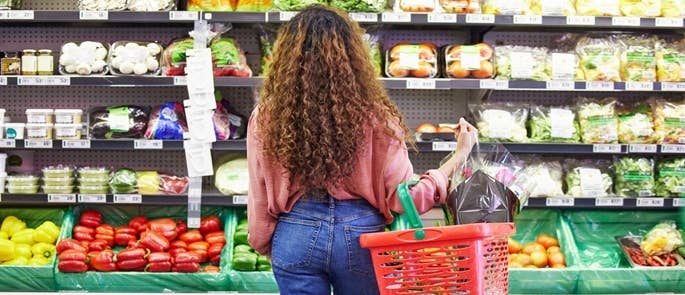
- Check the labels.
This will help to ensure that the plant-based foods you eat contain the nutrients your body needs. Switching to a vegan diet after eating animal products can mean that you lose out on some of the vital nutrients that animal products are rich in.
However, you can still get these nutrients in a vegan diet, you may just need to think a little more carefully about what you eat. The easiest way to know if a food product is vegan is to look for a ‘Suitable for Vegans’ label, however, looking at the listed allergens can also help.
Keep an eye out for the following ingredients, as these mean that the product is not vegan:
- Casein.
- Lactose.
- Whey.
- Collagen.
- Keratin.
- Aspic.
Some additives are also derived from animals, including E120, a red food colouring produced by crushing beetles.
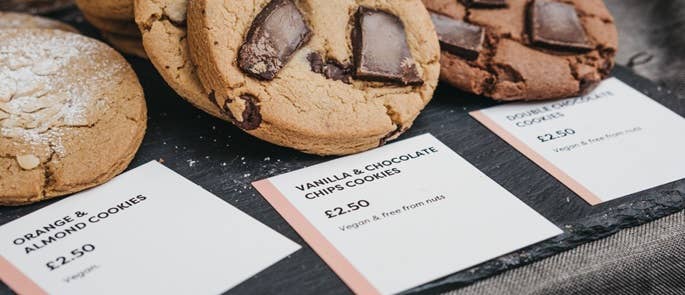
- Take your time.
The most important tip for anyone looking to transition to a vegan diet is not to rush into things. Completely changing your diet overnight can be a real struggle and this could lead you to think you aren’t cut out for it.
If this is the case, why not try making gradual changes to your current diet. For example, introduce vegan alternatives to some of the vegan foods you already eat. You could switch out your dairy milk for a vegan alternative. There are lots of different plant-based milks on offer with different flavour profiles, so finding one that you like could take time.
You could also try switching out one of your daily or weekly meals for a vegan recipe, gradually increasing this number over time as you find more recipes that you like. Remember, every substitute you make will have a positive impact.
You could also try a challenge like Veganuary to help you decide if the vegan lifestyle is for you. This is a challenge that requires you to eat a vegan diet for the whole of January and is a good way to introduce yourself to the diet. You could even use social media to join dedicated pages where people share their vegan experiences, tips and recipes.
If you are someone who currently eats meat and sees veganism as a huge change, you could always start by trying out a vegetarian diet, meaning you keep eating animal-derived products but give up meat. This can then ease you more gently into the vegan lifestyle. You can find out more about a vegetarian diet in our article ‘A Vegetarian Diet: What Can I Eat & What are the Benefits?’
Whether you decide to make the switch all at once, or introduce gradual substitutions to the animal-derived foods you normally eat, a vegan diet has undeniable benefits for animal welfare, the environment and your health. If you do decide to make the switch, it’s important that you keep your diet varied and nutritious so your body can function properly and keep you strong and healthy.
Further Reading:
- 10 Vegan Myths and Facts
- Vegan Food Products: What are the Labelling Requirements?
- Sustainable Food Practices: Choices & Importance
- Nutrition and Healthy Eating Training Course


